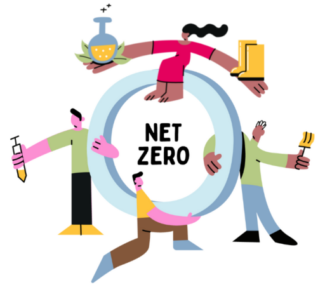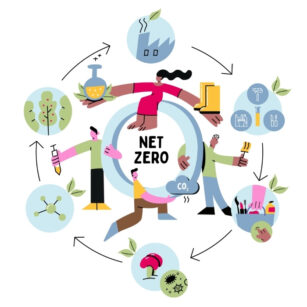

Grolman Commits to Achieving Net-Zero by 2050
We, Grolman Group, are announcing ambitious actions to combat climate change by committing to achieve Net-Zero emissions by 2050, joining other organisations in leading the way on urgently tackling climate change.

Net Zero vs.
Carbon Neutrality
Carbon neutrality refers to a policy of not increasing carbon emissions and achieving carbon reductions through offsets.
Net zero carbon means making changes to reduce carbon emissions as much as possible - and offsets as a last resort.
We are proud to be the first SME in the chemical industry globally to receive official validation for our Net-Zero reduction science-based targets across the entire value chain scopes 1, 2 and 3 by 2050 from the Science Based Targets Initiative (SBTi).

Net Zero vs.
Carbon Neutrality
Carbon neutrality refers to a policy of not increasing carbon emissions and achieving carbon reductions through offsets.
Net zero carbon means making changes to reduce carbon emissions as much as possible - and offsets as a last resort.
As part of our ongoing commitment to sustainability, we have set science-based targets to reduce greenhouse gas emissions validated by the Science Based Targets Initiative (SBTi). These commitments align Grolman Group with the Paris Agreement's most ambitious goal of limiting global temperature rise to 1.5°C.

The Grolman Group commits to Net Zero by 2050. Following the SBTi framework this means reducing absolute scope 1, 2 and 3 emissions by 90% by 2050, from a 2019 baseline. For its near term targets Grolman Group commits to reduce its Scope 1 and 2 GHG emissions by 46% by 2030, from a 2019 baseline.


We Believe in Circularity.
To accomplish this, we focus on circular innovation. We believe that the path to net zero is evidently linked to the concept of circularity. Only through circularity can we both create economic growth and avoid pollution and a wasteful use of valuable resources.
We Feel Responsible.
This is our vision because, as a family business, we want to pass on a healthy planet to the next generation. With these targets we are well on our way to reducing waste in our environment, and increasing our positive impact on our customers, the chemical industry and society.


We Need Partners.
We are convinced that all this will only be possible in close cooperation with our existing partners, suppliers, and customers, as well as new partners who will join us on this path. With our technical expertise and close personal relationships, we connect partners and needs along the entire value chain to jointly develop opportunities in circular innovation.





